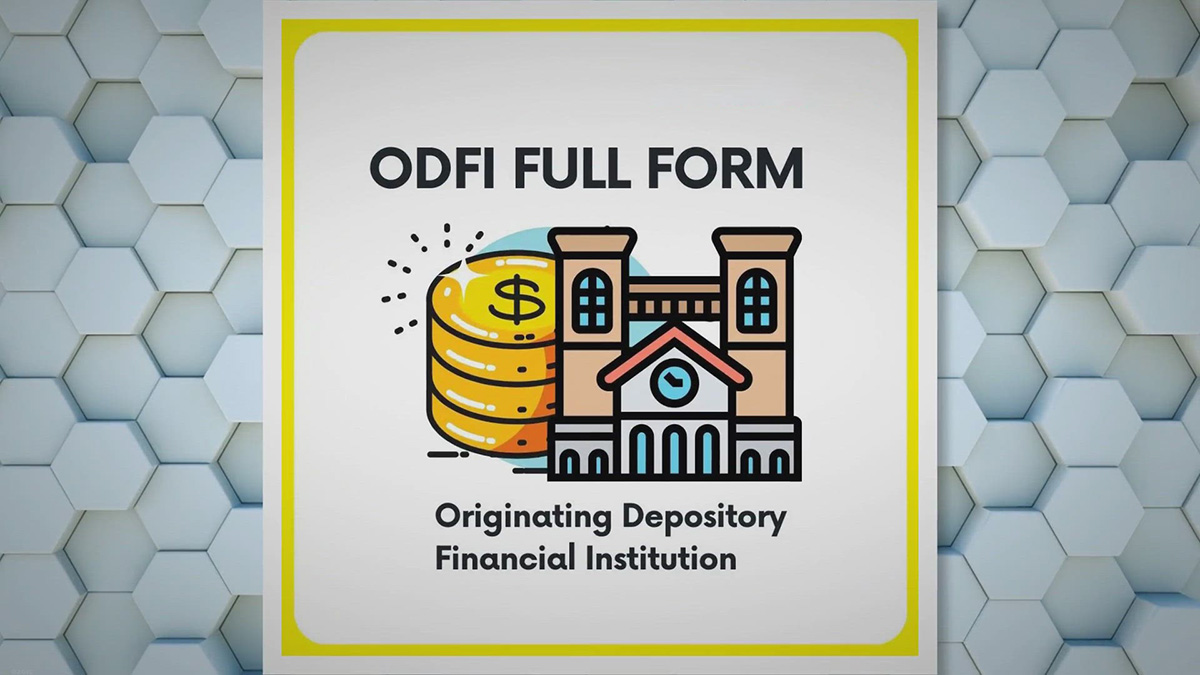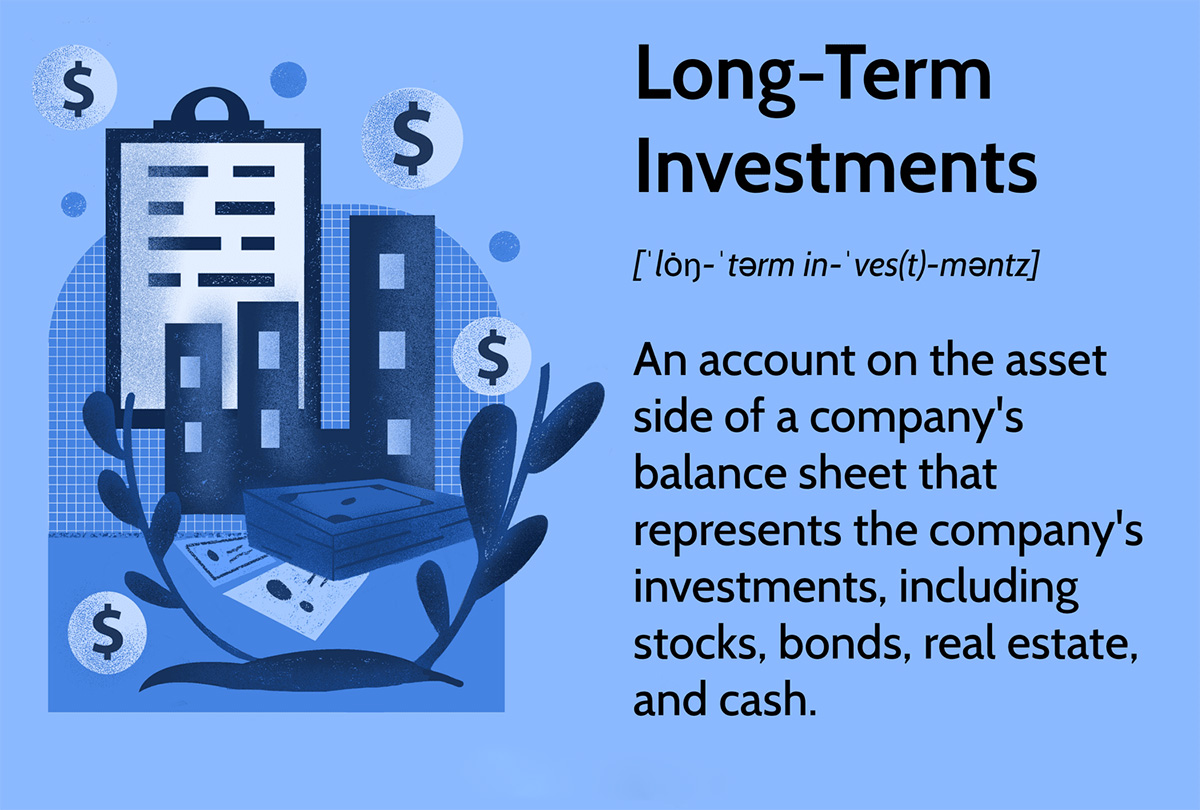

Finance
What Does C&I Mean In Banking
Published: October 13, 2023
Learn what the term C&I means in the context of banking and how it relates to finance. Gain a deeper understanding of this important financial abbreviation.
(Many of the links in this article redirect to a specific reviewed product. Your purchase of these products through affiliate links helps to generate commission for LiveWell, at no extra cost. Learn more)
Table of Contents
Introduction
Welcome to the world of banking, where countless terms and acronyms are thrown around on a regular basis. One such acronym that you may have come across is C&I, which stands for Commercial and Industrial. In the banking industry, C&I refers to a specific type of lending and financial services provided to businesses. Understanding what C&I means in banking is crucial for both business owners and individuals looking to expand their knowledge of the financial sector.
With the rapid growth of businesses and the ever-increasing need for capital, commercial and industrial lending has become an essential part of banking operations. Banks and financial institutions play a significant role in fueling economic growth by providing financial support to businesses in various sectors. C&I lending focuses on meeting the specific requirements of businesses, helping them fund their operations, invest in expansion, or manage cash flow effectively.
While C&I lending may seem complex at first, it plays a vital role in driving economic development and supporting business growth. This article aims to provide a comprehensive overview of what C&I means in banking, its importance, the lending process, associated benefits and risks, as well as some examples of C&I lending products and services.
Definition of C&I in banking
Commercial and Industrial (C&I) lending refers to a specific type of lending and financial services provided by banks and financial institutions to businesses. This category of lending focuses on meeting the financial needs of companies operating in various industries, including manufacturing, retail, technology, and services.
C&I loans are designed to support businesses in multiple ways. They may be used to fund working capital needs, purchase equipment or machinery, support business expansion, acquire other businesses, or manage cash flow fluctuations. Essentially, C&I lending provides businesses with the necessary capital to sustain and grow their operations in a competitive marketplace.
One distinguishing factor of C&I lending is that it primarily focuses on lending to businesses rather than individuals. While consumer loans are typically for personal use, C&I loans are specifically tailored to meet the unique needs and requirements of businesses. This includes lending to small and medium-sized enterprises (SMEs) as well as larger corporations.
Furthermore, C&I lending involves more than just providing loans. It encompasses a range of financial services, such as lines of credit, revolving credit facilities, trade finance, cash management solutions, and treasury services. These additional services are aimed at helping businesses manage their financial operations more efficiently and effectively.
In summary, C&I lending in banking refers to the provision of financing and financial services to businesses across different sectors. It is a specialized area of lending that supports business growth and drives economic development by facilitating access to capital and financial resources.
Importance of C&I in banking
Commercial and Industrial (C&I) lending plays a crucial role in the banking industry and the overall economy. Here are some key reasons why C&I lending is important:
- Driving Economic Growth: C&I lending fuels economic growth by providing businesses with the necessary capital to expand their operations, invest in new projects, and create employment opportunities. By supporting business growth, C&I lending contributes to overall economic development.
- Meeting Business Financing Needs: Businesses often require financial assistance to fund their working capital, purchase inventory or equipment, and manage day-to-day operational expenses. C&I lending addresses these financing needs by providing businesses with the necessary funds to support their operations.
- Supporting Business Expansion: Many businesses aspire to grow and expand their operations. However, expansion plans often require significant capital investment. C&I loans enable businesses to finance expansion projects, enter new markets, or acquire other companies, facilitating their growth aspirations.
- Strengthening Business Relationships: C&I lending also helps build long-term relationships between banks and businesses. By providing tailored financial solutions, banks establish themselves as trusted partners to businesses, fostering collaboration and mutual growth.
- Enhancing Cash Flow Management: Cash flow fluctuations can pose challenges for businesses, especially during periods of slow sales or delayed payments. C&I lending provides businesses with access to working capital lines of credit and other cash management solutions, assisting them in maintaining a steady cash flow.
- Enabling Innovation: C&I lending supports innovation by providing businesses with funds to invest in research and development, product innovation, and technological advancements. This enables businesses to stay competitive in a rapidly evolving marketplace.
Overall, C&I lending plays a vital role in meeting the diverse financial needs of businesses, driving economic growth, and promoting innovation. By providing essential funding and financial services, C&I lending supports business success and contributes to the overall health and vitality of the banking sector.
C&I lending process
The Commercial and Industrial (C&I) lending process involves several steps to ensure that businesses receive the appropriate financing for their needs. Here is an overview of the typical C&I lending process:
- Application: The process begins with the business submitting a loan application to the bank or financial institution. The application typically includes information about the business’s financials, industry, projected use of funds, and collateral.
- Credit Analysis: Once the application is received, the lender conducts a thorough credit analysis. This involves assessing the business’s creditworthiness by reviewing its financial statements, credit history, cash flow, and other relevant factors. The lender evaluates the risks associated with lending to the business and determines the loan amount, terms, and conditions.
- Underwriting: After the credit analysis, the loan application goes through the underwriting process. Underwriters review the loan application and supporting documents to validate information provided and ensure compliance with lending policies and regulations. They make recommendations on loan approval, terms, and conditions.
- Collateral Evaluation: In many cases, C&I loans require collateral to secure the loan. The lender evaluates the value of the collateral to assess its adequacy and potential liquidation value if necessary. Collateral can include assets such as real estate, inventory, equipment, or accounts receivable.
- Loan Structuring: Once the creditworthiness, underwriting, and collateral evaluation are complete, the lender structures the loan based on the needs of the business and the risk appetite of the institution. This includes determining the interest rate, repayment terms, repayment schedule, and any specific covenants or conditions attached to the loan.
- Loan Approval: The loan application and proposed loan structure are presented to the loan approval committee or management for final approval. This ensures that the loan aligns with the institution’s risk management policies and objectives.
- Loan Documentation: If the loan is approved, the lender generates the necessary loan documentation, including the promissory note, loan agreement, security agreements, and any other legal documents required. These documents outline the terms and conditions of the loan.
- Loan Disbursement: After the loan documentation is in place, the lender disburses the approved loan amount to the business. The funds can be transferred to the business’s bank account or issued as a line of credit, depending on the agreed-upon terms.
- Loan Monitoring and Management: Throughout the loan term, the lender monitors the business’s financial performance and compliance with loan covenants. Regular communication and reporting are maintained to assess the business’s ability to repay the loan and address any potential issues or risks that may arise.
- Loan Repayment: The business is responsible for repaying the loan according to the agreed-upon terms, including making regular payments of principal and interest. The lender tracks and manages the repayment process until the loan is fully paid off.
The C&I lending process may vary from one institution to another, but the general steps remain consistent. Through this process, banks and financial institutions ensure that businesses receive the appropriate financing and that the risks associated with lending are effectively managed.
Benefits and Risks Associated with C&I Lending
Commercial and Industrial (C&I) lending offers numerous benefits for both businesses and lenders. However, it also carries certain risks that need to be carefully managed. Here are the key benefits and risks associated with C&I lending:
Benefits:
- Business Growth: C&I lending provides businesses with the necessary capital to expand their operations, invest in new projects, and enter new markets, driving business growth and creating employment opportunities.
- Access to Capital: C&I lending ensures that businesses have access to the required funds to meet their financial needs, such as working capital, equipment purchase, inventory management, and cash flow management.
- Flexible Financing Solutions: C&I loans offer flexibility in terms of loan structures, interest rates, and repayment options, enabling businesses to tailor their financing solutions to their specific needs and financial capabilities.
- Relationship Building: C&I lending facilitates long-term relationships between banks and businesses, fostering collaboration and mutual growth. Establishing a solid relationship can lead to additional financial services and support for the business.
- Cash Flow Management: C&I lending assists businesses in maintaining a steady cash flow, especially during periods of slow sales or payment delays. This ensures a consistent operation and reduces financial stress.
Risks:
- Credit Risk: The primary risk associated with C&I lending is credit risk, where there is a possibility that the borrower may default on the loan. Lenders mitigate this risk by conducting thorough credit analysis, collateral evaluation, and monitoring the borrower’s financial performance closely.
- Market Risk: C&I lending is also exposed to market risk, where economic conditions, industry downturns, or regulatory changes can impact the borrower’s ability to repay the loan. Lenders assess market conditions and diversify their C&I loan portfolios to manage this risk effectively.
- Interest Rate Risk: Fluctuations in interest rates can affect the profitability of C&I loans, especially if the loan has a variable interest rate. Lenders employ risk management strategies, such as interest rate hedging, to mitigate the impact of interest rate changes.
- Liquidity Risk: Lenders face liquidity risk if they are unable to meet their obligations or fund new loans due to a shortage of liquidity. Effective liquidity management and diversification of funding sources are essential to address this risk.
- Operational Risk: C&I lending involves operational risks, including errors in loan processing, inadequate loan documentation, or internal control deficiencies. Lenders implement robust operational risk management practices to mitigate these risks.
By understanding and effectively managing these risks, lenders can provide the necessary financial support to businesses while safeguarding their own financial stability and sustainability.
Examples of C&I Lending Products and Services
The Commercial and Industrial (C&I) lending sector offers a wide range of products and services tailored to meet the diverse needs of businesses. Here are a few examples of C&I lending products and services:
Lines of Credit:
Lines of credit are a common C&I lending product. They provide businesses with access to a pre-approved amount of funds that they can draw upon as needed. This flexibility allows businesses to manage cash flow fluctuations and cover short-term financing needs.
Working Capital Loans:
Working capital loans are designed to provide businesses with the necessary capital to cover day-to-day operational expenses, such as purchasing inventory, paying suppliers, and meeting payroll obligations. These loans help ensure smooth business operations, especially during times of uneven cash flow.
Equipment Financing:
Equipment financing involves providing businesses with loans or lease options to acquire new or used machinery, equipment, or vehicles. By spreading the cost of equipment over time, businesses can avoid significant upfront expenses and efficiently manage their cash flow.
Trade Finance:
Trade finance services support businesses engaged in international trade by providing financing solutions for import and export activities. This may include products such as letters of credit, export financing, import financing, and trade loan facilities, enabling businesses to mitigate the financial risks associated with cross-border transactions.
Asset-Based Lending:
Asset-based lending allows businesses to secure loans using their assets, such as accounts receivable, inventory, or real estate, as collateral. This type of lending is particularly useful for businesses with valuable assets but limited cash flow or credit history.
Merchant Cash Advances:
Merchant cash advances provide financing to businesses based on their future credit card sales. In this arrangement, a lender provides a lump sum payment to the business, which is then repaid through a percentage of daily credit card sales. This option is popular among small businesses with fluctuating cash flow but consistent credit card sales.
Treasury Services:
C&I lending often includes a range of treasury services aimed at helping businesses manage their cash and optimize their financial operations. These services may include cash management solutions, payment processing, electronic banking, and risk management products.
These are just a few examples of the diverse range of C&I lending products and services available to businesses. Each business has unique financial needs, and C&I lenders offer customized solutions to help them thrive and grow in a competitive marketplace.
Conclusion
Understanding what C&I means in banking is essential for businesses and individuals looking to navigate the financial landscape effectively. Commercial and Industrial (C&I) lending plays a vital role in supporting business growth, driving economic development, and providing businesses with the necessary capital to meet their financial needs.
From lines of credit and working capital loans to equipment financing and trade finance services, C&I lending offers a diverse range of products and services tailored to businesses across various industries. These lending solutions enable businesses to manage cash flow, fund operations, expand their operations, and enter new markets.
While C&I lending comes with risks, such as credit risk, market risk, and interest rate risk, financial institutions employ rigorous underwriting and risk management practices to mitigate these risks and safeguard their financial stability.
In conclusion, C&I lending is a crucial component of the banking industry. It not only provides businesses with the funding they need but also supports economic growth, fosters innovation, and strengthens the relationship between banks and businesses. By understanding the importance, process, benefits, risks, and examples of C&I lending, businesses and individuals can make informed financial decisions and effectively leverage the resources available to them.














